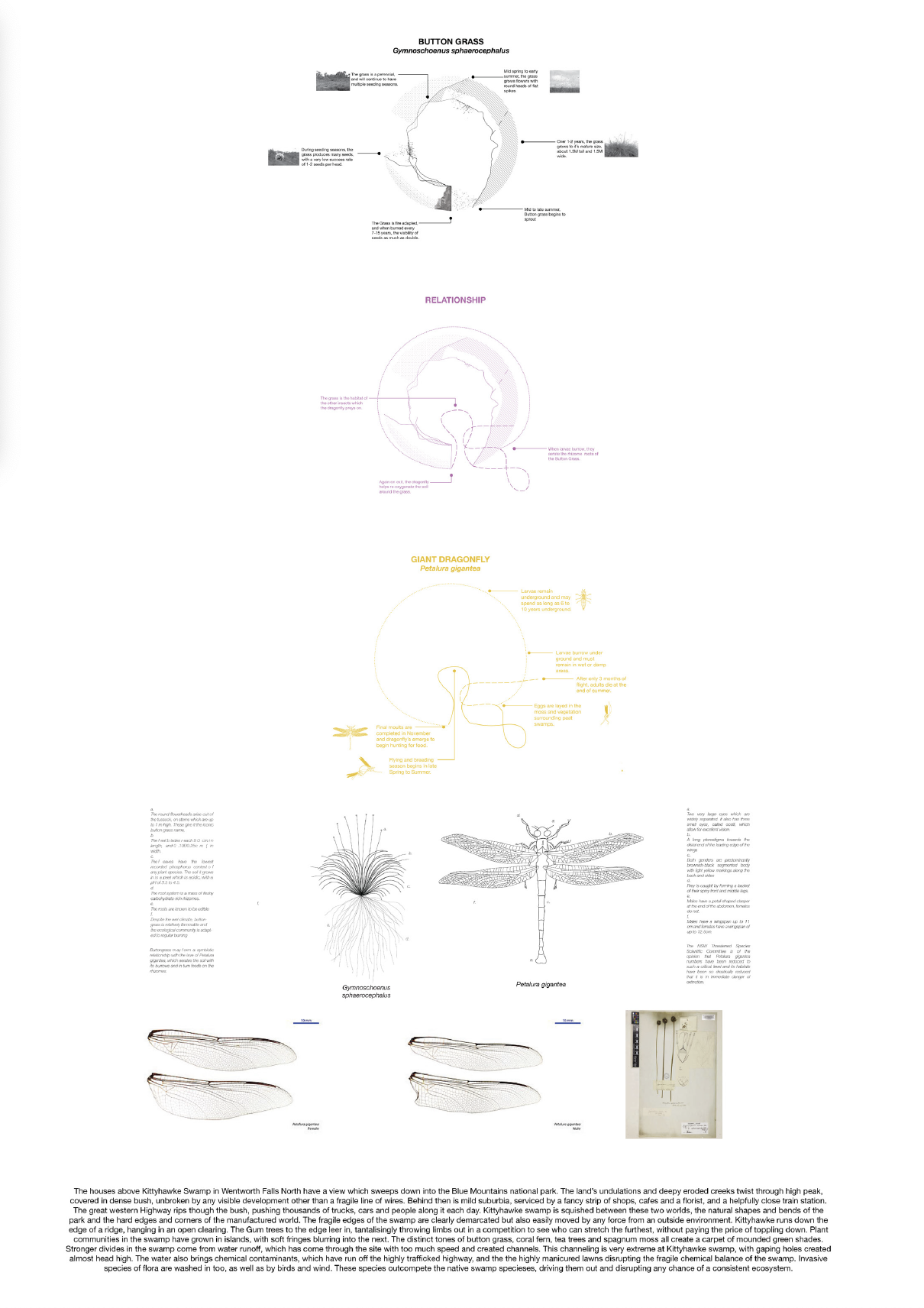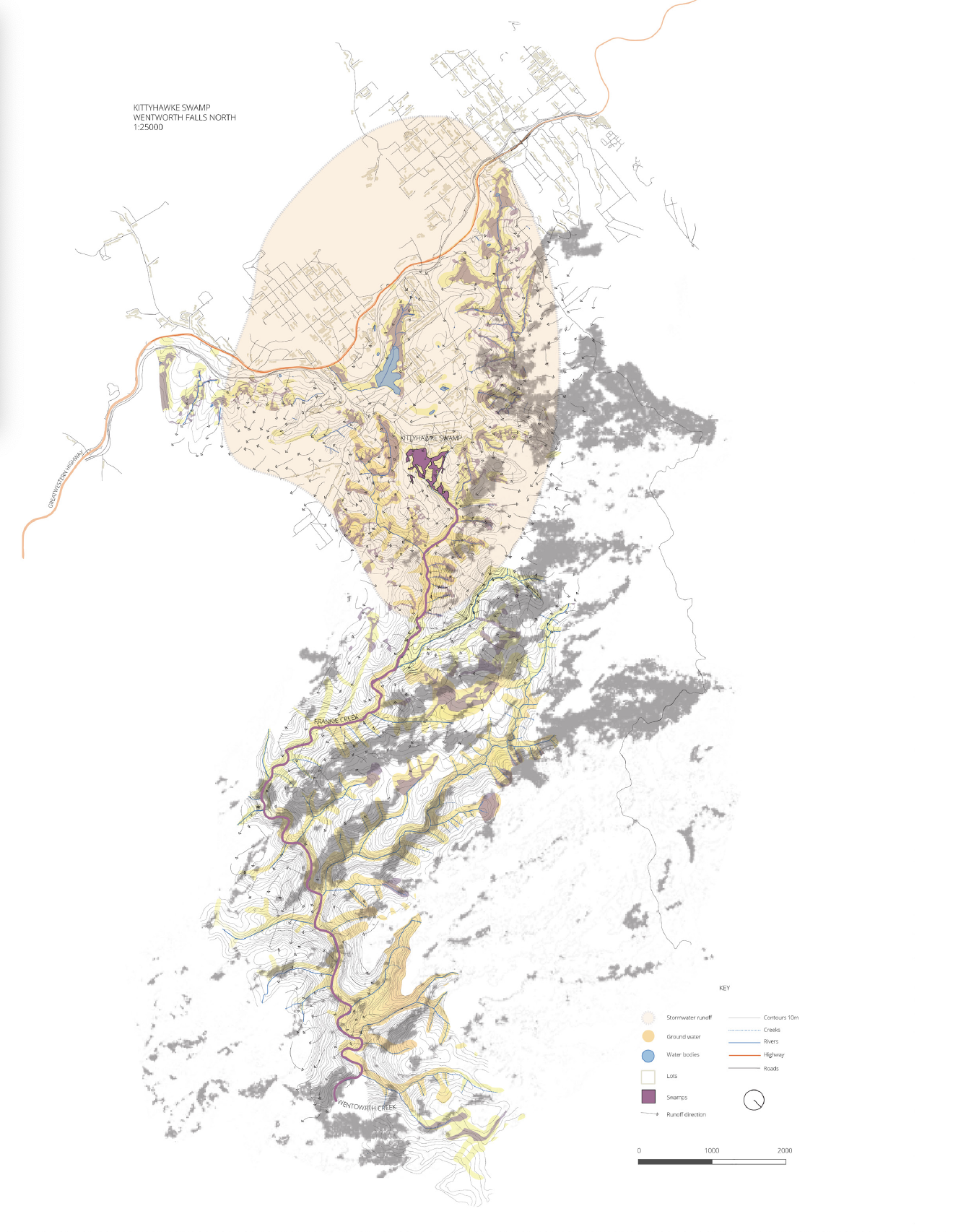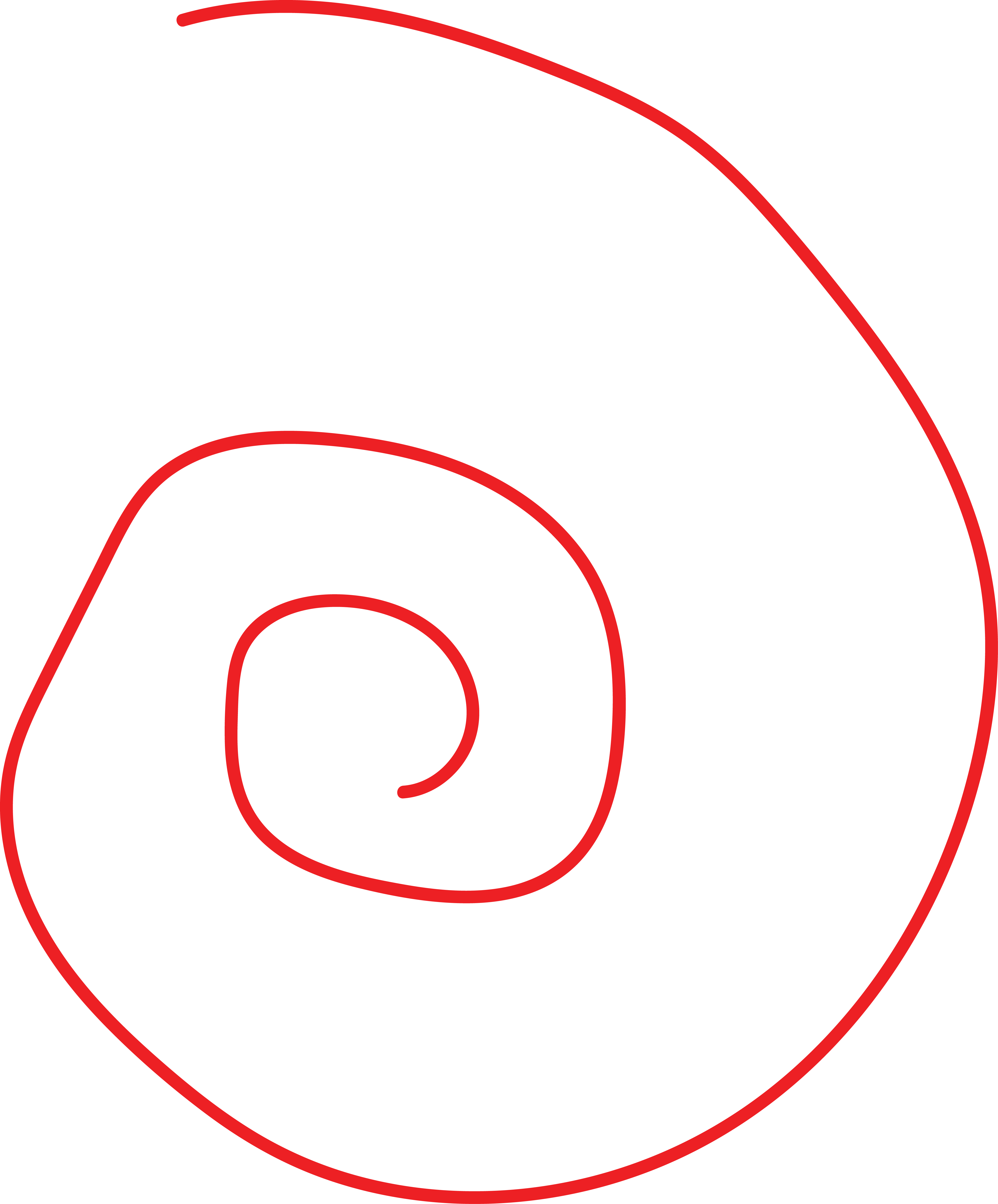Swamp Suburbia
Jennell Martinez and Daniel Gillespie
The houses above Kittyhawke Swamp in Wentworth Falls North stretch out as if in competition to see who can reach the furthest, all without a sweeping view of the Blue Mountains National Park below. The land's undulations and deeply eroded creeks twist through high peaks covered in dense bush, unbroken by any visible development other than a fragile line of wires. Behind this natural landscape lies mild suburbia, serviced by a fancy strip of shops, cafes, and a conveniently close train station. The Great Western Highway cuts through the bush, pushing thousands of trucks, cars, and people daily.

In Kittyhawke Swamp, plant communities have grown in islands, with soft fringes blurring into the next. The distinct tones of button grass, coral fern, tea trees, and sphagnum moss create a carpet of mounded green shades. However, stronger divides in the swamp come from water runoff, which moves through the site too quickly, creating channels and almost head-high gaping holes. This water also brings chemical contaminants from the heavily trafficked highway and manicured lawns, disrupting the swamp's delicate chemical balance. Invasive species of flora are washed in by water, birds, and wind, outcompeting native swamp species and disrupting any chance of a consistent ecosystem.



Taking Part in Swampcare

Mapping the swamp communities next to the urban development

Kittyhawke Swamp is squeezed between the natural shapes and bends of the park and the hard edges and corners of the manufactured world. The fragile edges of the swamp are demarcated but can be easily moved by any outside force. The swamp runs down the edge of a ridge, hanging in an open clearing—the gum trees at the edge leer in, tantalisingly throwing their limbs out over the swamp.


